The Story of Culture and Arts
- Image resource of Korean history
- Documents from History TextBooks
- Culture & Art Stories from Korean History
- Culture & Art Stories from Korean History - Korean
- National Institute of Korean History
- History net
- About the site
- Introduce
-
Numerous topics related to Korean culture and art are mentioned in middle and high school national history textbooks, but most of them are briefly described by era, making it difficult to understand their concepts, transition processes, and characteristics.
<Culture & Art Stories from Korean History> produces and provides video materials based on expert commentary on the flow, change process, characteristics and characteristics of each major topic in the field of culture and art in Korean history.

Scenario
Kim Whan-ki, the pioneer of Korean abstract art and a world-renowned artist! Jars frequently appear in his works.
The unique paintings drawn using dots remind people of Korean ceramics.
This is a Buncheong jar made in the Joseon Dynasty, stamped with a pattern of connected dots. It exudes a detailed yet simple and elegant beauty.
The unique patterns on Buncheong Ware have been reinterpreted in contemporary art and its artistry lives on. What type of ceramic is Buncheon Ware?
What is behind the name, 'Buncheong Ware'?
During the Goryeo Dynasty, Goryeo Celadon was at the center of ceramic culture, and in the Joseon Dynasty, White Porcelain, used by the royal family, rose to prominence.
Buncheong Ware appeared during the transitional period between the late Goryeo Dynasty and the early Joseon Dynasty.
Buncheong Ware possesses characteristics of both Goryeo Celadon and Joseon White Porcelain. It is a ceramic ware with its own unique qualities.
White slip
Ceramic Ware is dipped into white slip, a liquid mixture of water and white clay, or brushed with white clay to whiten its surface
Buncheong Ware is formed using the same type of clay used to make Goryeo Celadon then dressed with white clay, also used to make White Porcelain, to color its surface white.
The patterns on Buncheon Ware change depending on how the ceramic is coated with white slip.
Such coating methods developed from variations of the white inlaying technique used on Goryeo Celadon.
The inlaid and stamped decoration technique, a production technique of Buncheong Ware, is characterized by its precise patterns which completely cover the surface. The elaborate repeating patterns form another charm of Buncheong Ware.
Iron-painting technique: Drawing patterns or pictures on the surface using iron oxide pigments
The patterns that decorated Buncheong Ware also changed over time.
As the inlaying technique and iron-painting technique further developed, bolder and more vivid designs began to appear.
From this point, Buncheong Ware also began to exhibit distinctive regional characteristics.
Distinctive regional characteristics are clearly defined in Buncheong Ware from Gochang, where one finds incised patterns featuring fish and peonies, while those from Gongju show similar patterns in iron-painted designs.
When the production of White Porcelain took off, Buncheong Ware became patternless and white-coated, similar in appearance to White Porcelain.
Soon, the production volume decreased sharply, and by the 16thcenturyBuncheongWare had disappeared.
Did you know that in the Joseon period, Buncheong Ware was not called by this name? In the Annals of the Joseon Dynasty ,it was either called Ceramic Ware or Porcelain Ware.
Ko Yu-seop (1905–1944): An aesthetician and art historian active during the Japanese occupation period
“I named those with greyish-green ceramics among the Goryeo and Joseon Dynasty ceramics “Bunjang hoecheong ware,” meaning “greyish-green ceramic ware coated with white slip”
-From Jogwang(Morning Light),vol.72published by Chosunilbo(ChosunDaily) in 1941
Mr. Ko Yu-seop, an art historian, was the first to call this ceramic ware coated with white slip, “Bunjang hoecheong ware,” during the Japanese occupation period.
From the 1950s, among scholars specializing in Korean porcelain, these artifacts came to be called Buncheong Ware, a shortened version of Bunjang hoecheong.
“Buncheong Ware is the only type of ceramic ware that shows when, by whom, and why it was named. There have been similar types of ceramic ware in China, but the Chinese regarded them simply as types of porcelain ware and did not give them particular names, as Koreans have done with Buncheong Ware.” Park Gyeong-ja / Cultural heritage appraiser, Cultural Heritage Administration
Buncheong Ware was a Part of Large Data Collected during the Joseon Dynasty?
In the Joseon Dynasty, taxes were collected in the forms of indigenous products from each region.
Ceramic ware was one of the items used as tax payment.
Buncheong Ware was a leading type of ceramic ware used to pay taxes because it was the most widely produced ceramic ware in the country.
Buncheong Ware used to pay taxes were marked with their places of origin and the names of government offices where they were used.
They were put under systematic and strict management.
“From now on, ceramic ware must be marked with the name of the maker as proof. Those not made with care shall be rejected.” - Annals of King Sejong, vol.11, April. 3rd, 1421
They were marked with the name of the maker in order to manage product quality and to hold the maker responsible in case any problem occurred.
Following the proclamation of the Korean alphabet, Hangeul, in 1446, Buncheong Ware marked in Hangeul has also been found.
The most distinctive feature of Buncheong Ware paid in tribute to the government are their detailed and elegant stamped patterns.
The uniform shape, size, and pattern of Buncheong Ware collected from various regions reflect the central government’s systematic organization of the provincial system and its efforts to strengthen centralized authoritarian rule since the foundation of the dynasty in 1392.
In order to implement a reasonable tax system, King Sejong had surveys conducted on the population, geography, and characteristics of each county and collected taxes based on this information.
The Geography Section of the Annals of King Sejong was recorded based on this information, and it can be regarded as a big data source from the Joseon Dynasty that allows one to discern the status of every region in detail.
Buncheong Ware, which served as payment for taxes to the government, also has value as an important historical reference because it reveals the standards and methods of tax collection by the central government as well as the tax payment status of each region of the country.
It is difficult to historically research other parts of the big data
we call the Geography Section of the Annals of King Sejong.
Hardly any of the recorded places of origin
and consumption sites in this data exist today.
However, since Buncheong Ware is porcelain ware,
it leaves fragments behind even if it breaks,
which provides us a wealth of information.
That is why Buncheong Ware has huge value
as historical reference material that sheds light
on specific aspects of our history.
Park Gyeong-ja / Cultural heritage appraiser, Cultural Heritage Administration
Detailed yet dynamic and harmonious, Buncheong Ware possesses it all!
It is a testament to early Joseon culture,
where various attempts were made to establish social order
in the newly founded dynasty.
[Epilogue]
Must-Know Facts on Culture and Art in Korean History
1. Buncheong Ware is ceramic ware that was manufactured primarily between the appearance of Goryeo Celadon and Joseon White Porcelain
2. Buncheong Ware was created with white slip, a mixture of water and white clay, to whiten the surface
3. Buncheong Ware was important as tributary ware, paid as a type of tax in Joseon
Fine Arts & Crafts
18 films-
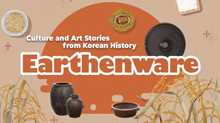 Earthenware08:28
Earthenware08:28 -
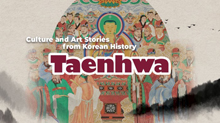 Taenghwa, or Buddhist Paintings in the Joseon Period08:36
Taenghwa, or Buddhist Paintings in the Joseon Period08:36 -
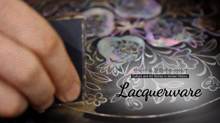 Lacquerware09:04
Lacquerware09:04 -
 Dyeing and Weaving08:21
Dyeing and Weaving08:21 -
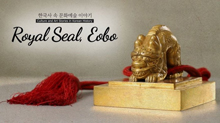 Royal Seal, Eobo07:53
Royal Seal, Eobo07:53 -
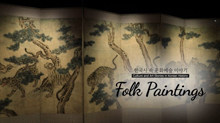 Folk paintings07:49
Folk paintings07:49 -
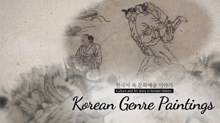 Korean Genre Paintings10:05
Korean Genre Paintings10:05 -
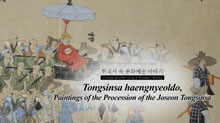 Paintings of the Procession of the Joseon Tongsinsa10:09
Paintings of the Procession of the Joseon Tongsinsa10:09 -
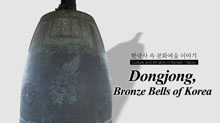 Dongjong, Bronze Bells of Korea08:50
Dongjong, Bronze Bells of Korea08:50 -
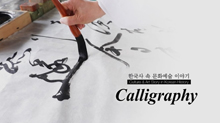 Calligraphy08:32
Calligraphy08:32 -
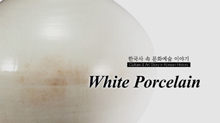 White Porcelain08:18
White Porcelain08:18 -
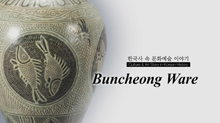 Buncheong Ware07:48
Buncheong Ware07:48 -
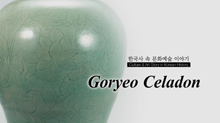 Goryeo Celadon07:54
Goryeo Celadon07:54 -
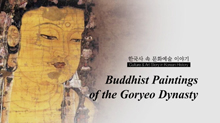 Buddhist Paintings of the Goryeo Dynasty07:57
Buddhist Paintings of the Goryeo Dynasty07:57 -
 Clay Figures, Figurines07:01
Clay Figures, Figurines07:01 -
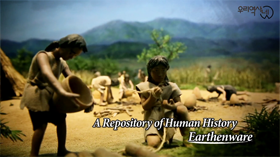 Clay Earthenware06:05
Clay Earthenware06:05 -
 Paintings of the Joseon Dynasty08:09
Paintings of the Joseon Dynasty08:09 -
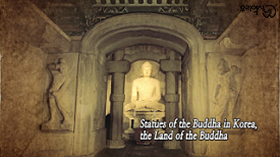 Statues of the Buddha in Korea09:03
Statues of the Buddha in Korea09:03

